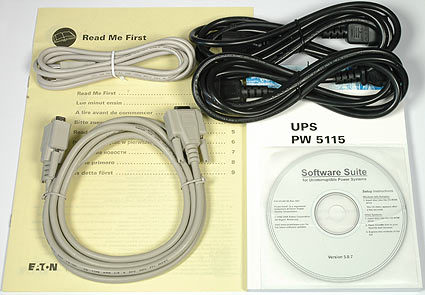UPSes To The Rescue
Eaton/Powerware 5115 USV
Last but not least, there is Eaton's Powerware 5115 USV, which offers the highest effective power output (670 W). It comes in a micro tower enclosure, which is only suitable to sit on the floor or on the table, or probably right next to the system you want to protect and provide with the battery buffer. The unit is made of solid metal Like the others, you can exchange the batteries while the unit is working, which you can do at the front of the device without requiring any tools. The batteries at 7 Ah each are dimensioned right in between the APS's 9 Ah types and Belkin's 5 Ah batteries, giving this product a battery runtime level that falls exactly between the two competitors.
Unfortunately, the unit has a 60 mm fan, which doesn't seem to be temperature controlled. At least it was always running at our test location at 76°F (25°C), even when the client system was shut off, and if your desktop or workstation PC runs quietly, you'll certainly hear the UPS. The unit doesn't offer surge protection and filtering for a phone line, but it does accommodate network connections. It comes with both a serial port and a USB interface, so you can use it any way you need. There are six power ports. All of them are run through the battery buffer, and they're surge protected. The APC unit only offers four battery-buffered ports. The Belkin device has six power ports, which are battery buffered and surge protected, and there are two more ports with surge protection, but without a battery buffer.
Eaton provides a 30-day trial for the PowerVision software, but we decided to stick with LanSafe 5.0, which is less powerful, but more than adequate for home and SMB use. The software calculates the remaining battery runtime at the given load, which was 28 minutes at 23% load (142 W). It's good to see that this estimate was very precise, as the system shut down after exactly 28 minutes.
Get Tom's Hardware's best news and in-depth reviews, straight to your inbox.
Current page: Eaton/Powerware 5115 USV
Prev Page Belkin Bulldog Plus Monitor, Continued Next Page Installation Wizard
Patrick Schmid was the editor-in-chief for Tom's Hardware from 2005 to 2006. He wrote numerous articles on a wide range of hardware topics, including storage, CPUs, and system builds.



